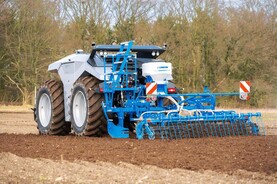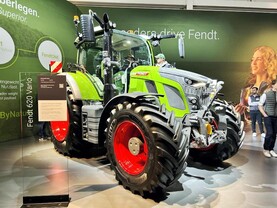Launched in 2018, the Vistamilk SFI Research Centre was formed by Science Foundation Ireland and the Department of Agriculture Food and the Marine (DAFM).
Its concept is to provide world class research and innovation to the Irish agri-food sector and ensure the sustainability of dairy industry.
Jonathan’s main focus is on the greenhouse gas emissions from Irish dairy production, a topic which is very much in the spotlight.
Emissions
COP26 set a target to cut overall emissions by 51% by 2030, with the recent National Climate Action Plan aiming for a 22-30% reduction in agricultural emissions by the same date.
“It’s definitely not all doom and gloom,” Jonathan said.
“There are certain tools we are developing that are working and showing results. I am currently working on the creation of full life cycle, farm-specific carbon footprints for the Teagasc Signpost Farms. With this we have been able to provide realistic targets for farmers to reduce emissions, and the findings have been really positive.”
Dairy production accounts for approximately 12% of total emissions nationally – this being made up predominately of methane and nitrous oxide.
Life cycle assessment methodology is used to calculate the amount of emissions generated from milk production.
Region-specific
Previous life cycle assessment tools would largely use international methods and emission factors. However, recent research has published country/region-specific emission factors for a number of emission sources.
Where these country/region-specific emission factors are used, we have seen the emissions intensity of 1kg fat and protein corrected milk reduce from 1.12kg CO2 equivalent to 0.99kg CO2 equivalent.”
Greenhouse gas mitigation strategies can be adopted to reduce emissions.
“There are tools out there that are proven to work”, Jonathan explained. “The adaptation of better practices on farm, such as low emission slurry spreading, using protected urea instead of calcium ammonium nitrate (CAN), and improving the herd genetic make-up, all have shown to result in the reduction of emissions.
Jonathan mentions that the effect of carbon sequestration on the emissions output also needs to be accurately accounted for.
“Carbon footprinting tools currently use international carbon sequestration rates which are not fully accurate in an Irish context. We have a new Carbon Observatory in development, which will take into account different soil types and management practices, and even the impact of peatlands.”
Another important area that Jonathan and his team are looking at is the biogenic methane production from cows. Biogenic methane from cows is a byproduct from digestive fermentation in the rumen, and is a large contributor to overall agricultural emissions.
Trials have been completed indicating how different feed types affect methane output, but this has not captured the full story, as Jonathan explains.
“We have invested in a new technology called Greenfeed, which will allow us to routinely measure methane emissions for a large period of time in a pasture-based system. It is basically a mobile feeder that the cows can access throughout the day and as they are feeding, the methane output is simultaneously being captured. What this allows us to do is capture a huge amount of data over a full lactation on an Irish grazing-based system.”
Science Week
This week is Science Week supported by Science Foundation Ireland, and Jonathan is keen to get the general public engaged.
“Science Week allows us here in Vistamilk to engage with the general public. It is important that we are getting feedback and even some direction from as many different voices as possible. There are so many potential new research topics and it is always refreshing to hear other people’s ideas.
"Researchers from across VistaMilk are contributing to SFI Science Week Festivals across the country including Cork Science Festival and the Festival of Farming."
This Science Week we want to hear your ideas for what researchers in Ireland could explore. Submit your idea at www.creatingourfuture.ie.






 This is a subscriber-only article
This is a subscriber-only article





